Each week we’ll uncover some unusual and (hopefully) interesting facts about the city. This week we take on the Great Fire, which destroyed most of Vancouver on June 13, 1886.
1. The Great Fire destroyed the city in a matter of minutes
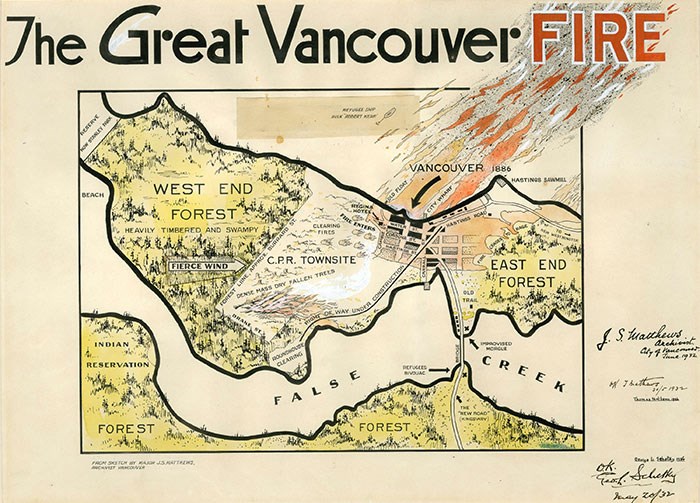 City of Vancouver Archives. Sketch by J.S. Matthews, Archivist Vancouver.
City of Vancouver Archives. Sketch by J.S. Matthews, Archivist Vancouver.
Historical reports suggest the fire swept through the city within 25 – 45 minutes. Most of the newly incorporated city of Vancouver (which was predominantly situated in present day Gastown), was completely destroyed by what started as a brush-clearing fire between present-day Main and Cambie St. Strong winds blew the flames into dry brush, resulting in a swift and devastating city-wide fire.
2. Practically everything was destroyed
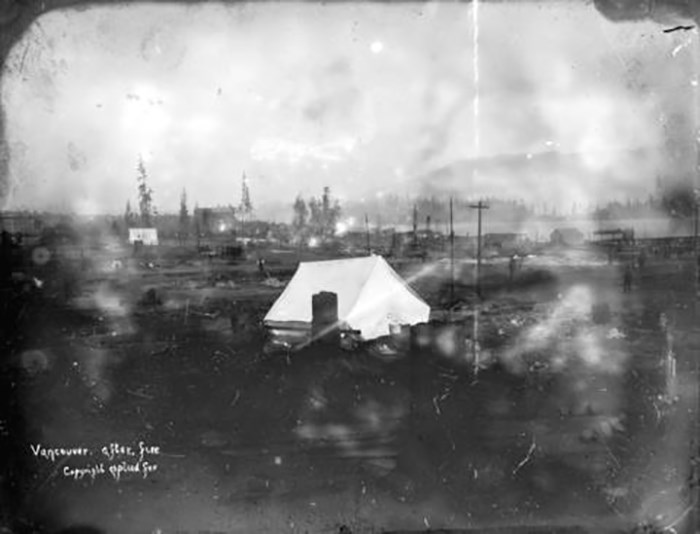 City of Vancouver Archives, LGN 455. Photo J.A. Brock and Harry T. Devin
City of Vancouver Archives, LGN 455. Photo J.A. Brock and Harry T. Devin
Approximately 1,000 wooden buildings, (essentially the entire city) were ravaged by the fire. Some of the only buildings to survive were the Hastings Mill, a stone building in the West End and a few buildings near False Creek. The city persevered and buildings began to be rebuilt within a matter of days.
3. The Daily News printed a gruesome account of the fire
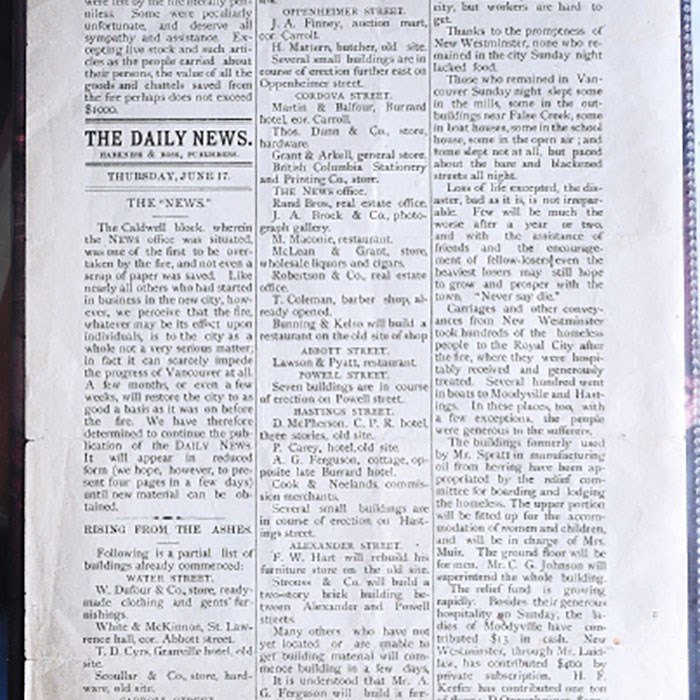 Vancouver Sun / 00032295A (Nick Procaylo/PNG) [PNG Merlin Archive].
Vancouver Sun / 00032295A (Nick Procaylo/PNG) [PNG Merlin Archive].
4. Survivors took to the water
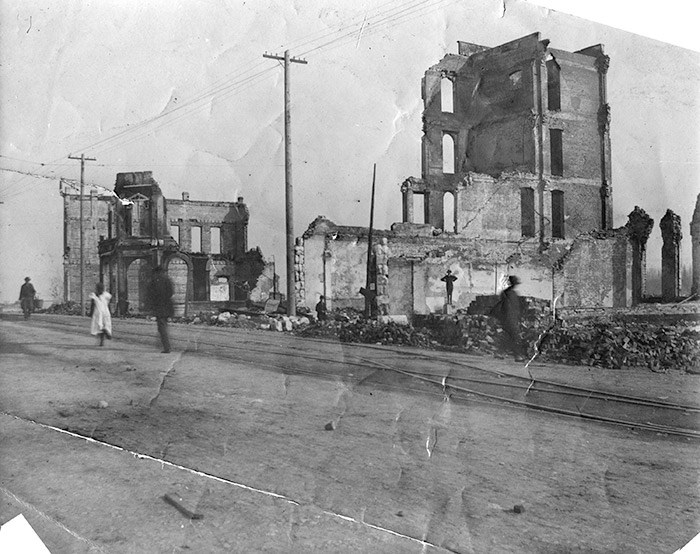 City of Vancouver Archives: AM54-S4-: Out P204.
City of Vancouver Archives: AM54-S4-: Out P204.
Many people managed to survive by getting on boats or simply jumping straight into the Burrard Inlet. The Squamish Nation used their canoes to paddle from the North Shore and rescue the citizens who were stuck floating in the water.
5. The city was not prepared
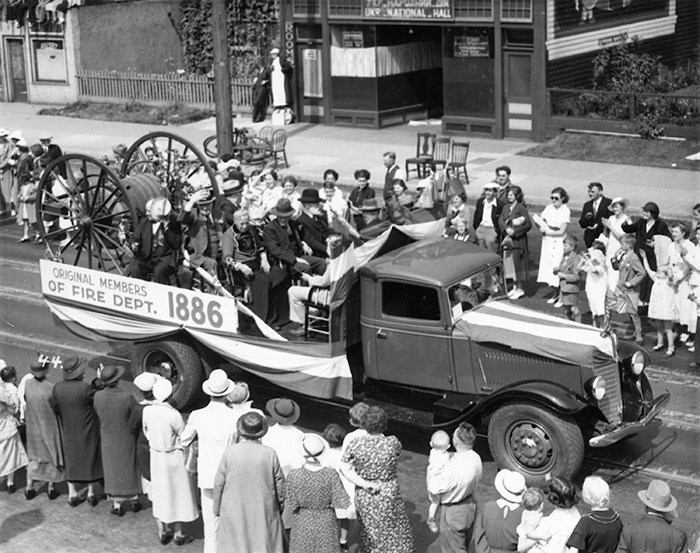 Photo of the surviving members of the 1886 Vancouver Fire Department in 1936. City of Vancouver Archives: CVA 76-11.
Photo of the surviving members of the 1886 Vancouver Fire Department in 1936. City of Vancouver Archives: CVA 76-11.
Equipped with only shovels, buckets and axes, the city’s firefighters tried desperately to tame the flames, but could not subdue the fire’s extreme force. Flames grew so hot that they actually melted the bell of the St. James Anglican Church. The melted bell can be seen today at the Museum of Vancouver. A fundraising initiative raised enough money for the city to purchase its first fire engine on July 30, 1886.
Read more from our "5 Things You Didn't Know" series HERE.


